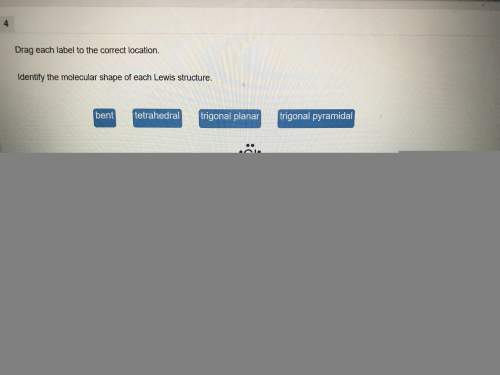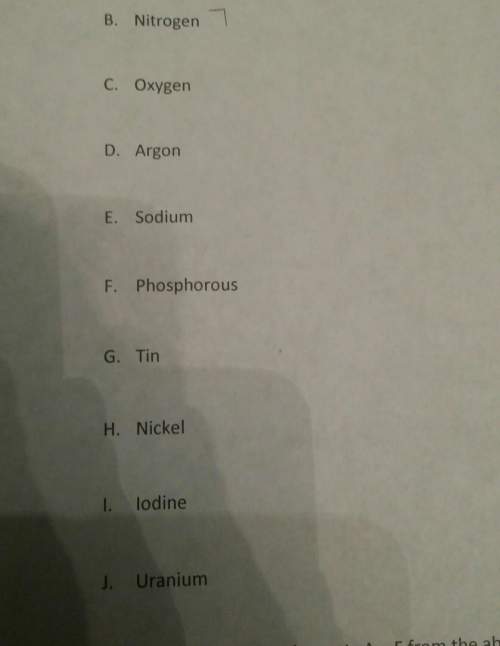
Chemistry, 23.03.2022 03:30 TheViperMlg23676
Instructions: For this investigative phenomenon, you will need to determine the percent yield of magnesium oxide from the given reaction to determine if it is a useful commercial process. Record your data and calculations in the lab report below. You will submit your completed report.
Title:
Objective(s):
Hypothesis:
No hypothesis needed for this lab. Your theoretical yield calculation serves as your prediction for what you expect the lab to produce, and that will be determined later in the lab.
Procedure:
Access the virtual lab. Because this lab is virtual, summarize the steps used to collect your data. In addition, list and explain your controlled variables, independent variable, and dependent variable for this lab.
Materials:
Percent Yield Virtual Lab
Variables:
Remember, controlled variables are factors that remain the same throughout the experiment. An independent (test) variable changes so that the experimenter can see the effect on other variables. The dependent (outcome) variable will change in response to the test variable.
Controlled variables:
Independent Variable:
Dependent Variable:
Summary of Steps:
Data:
Type the data in the data table below. Don’t forget to record measurements with the correct number of significant figures. Hint: Using the same instrument, you should have the same number of digits to the right of the decimal.
Data
Trial 1
Trial 2
Mass of empty crucible with lid
Mass of Mg metal, crucible, and lid
Mass of MgO, crucible, and lid
Calculations:
Show your calculations for each of the following. Remember, calculations should follow rules for significant figures.
Write the balanced chemical equation for the reaction you are performing.
Subtract the mass of the crucible and lid (row 1 in the chart) from the total mass of Mg, crucible, and lid (row 2 in the chart) to find the mass of magnesium for each trial.
Trial 1:
Trial 2:
Subtract the mass of the crucible and lid (row 1 in the chart) from the total mass of MgO, crucible, and lid (row 3 in the chart) to find the mass of magnesium oxide for each trial. This is the actual yield of magnesium oxide for each trial.
Trial 1:
Trial 2:
Magnesium is the limiting reactant in this experiment. Calculate the theoretical yield of MgO for each trial.
Trial 1:
Trial 2:
Determine the percent yield of MgO for your experiment for each trial.
Trial 1:
Trial 2:
Determine the average percent yield of MgO for the two trials.
Conclusion:
Write a conclusion statement that addresses the following questions:
Explain why the product had a higher mass than the reactant, and how this relates to conservation of matter.
What sources of error may have contributed to the percent yield not being 100 percent? (Think about things that may have led to inaccurate measurements or where mass of the product could have been lost if this experiment was conducted in a physical laboratory.)
How do you think the investigation can be explored further?
Post-Lab Reflection Questions
Answer the reflection questions using what you have learned from the lesson and your experimental data. It will be helpful to refer to your chemistry journal notes. Answer questions in complete sentences.
When conducting this experiment, some procedures call for heating the substance several times and recording the mass after each heating, continuing until the mass values are constant. Explain the purpose of this process and how it might reduce errors.
Your company currently uses a process with a similar cost of materials that has an average percent yield of 91 percent. If the average percent yield of this process is higher than that, this could save the company money. What is your recommendation to the company? Please support your recommendation using your data, calculations, and understanding of stoichiometry gathered from this lab.

Answers: 3


Another question on Chemistry

Chemistry, 22.06.2019 11:50
If oil spills continue, all of the following should be expected except (2 points) death of aquatic life. polluted groundwater. decreased soil productivity. increased global temperatures.
Answers: 3

Chemistry, 22.06.2019 13:00
Using the thermodynamic information in the aleks data tab, calculate the standard reaction free energy of the following chemical reaction: →+p4o10s6h2ol4h3po4s round your answer to zero decimal places.
Answers: 3

Chemistry, 22.06.2019 18:10
Given the following at 25c calculate delta hf for hcn (g) at 25c. 2nh3 (g) +3o2 (g) + 2ch4 (g) > 2hcn (g) + 6h2o (g) delta h rxn= -870.8 kj. delta hf=-80.3 kj/mol for nh3 (g), -74.6 kj/mol for ch4, and -241.8 kj/mol for h2o (g)
Answers: 1

Chemistry, 23.06.2019 04:20
Calculate the mass of 0.750 mol of the following substance. na3po4.
Answers: 1
You know the right answer?
Instructions: For this investigative phenomenon, you will need to determine the percent yield of mag...
Questions


Mathematics, 18.03.2021 01:30




Geography, 18.03.2021 01:30








Mathematics, 18.03.2021 01:30



Mathematics, 18.03.2021 01:30


Computers and Technology, 18.03.2021 01:30





